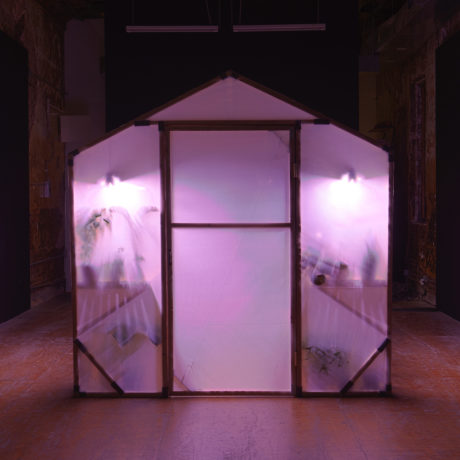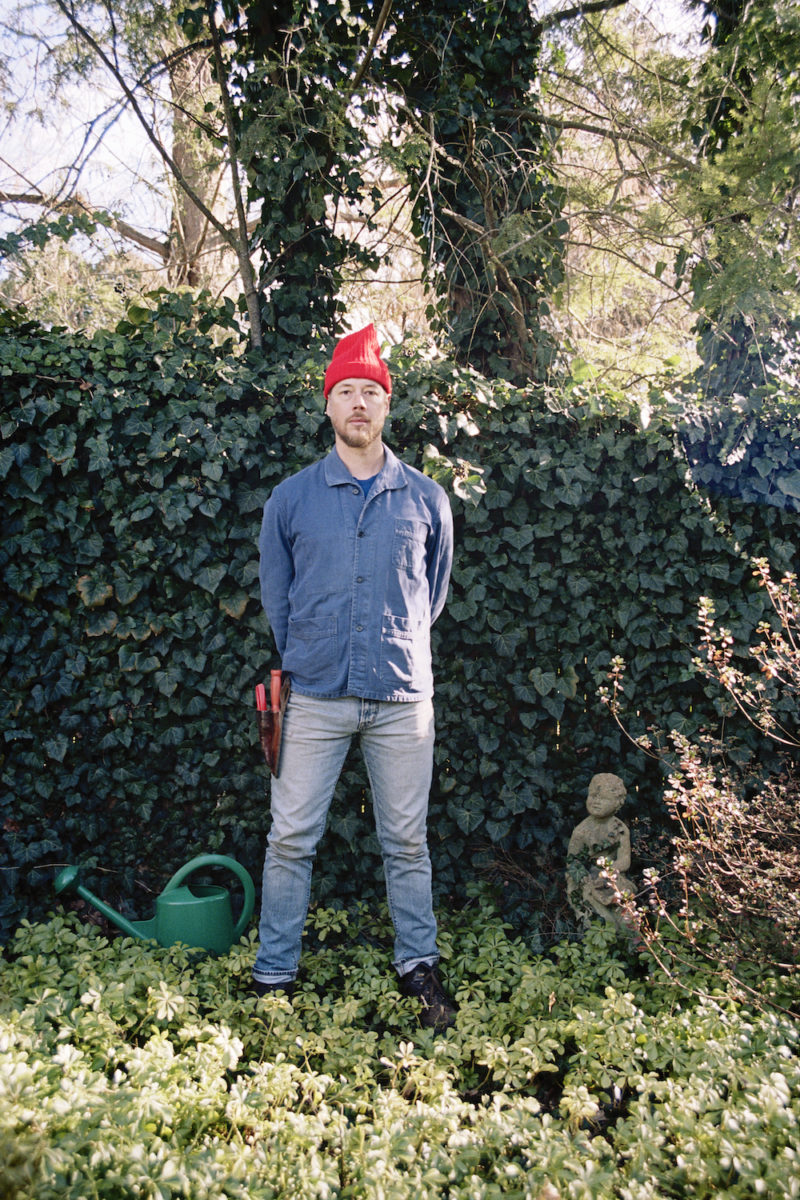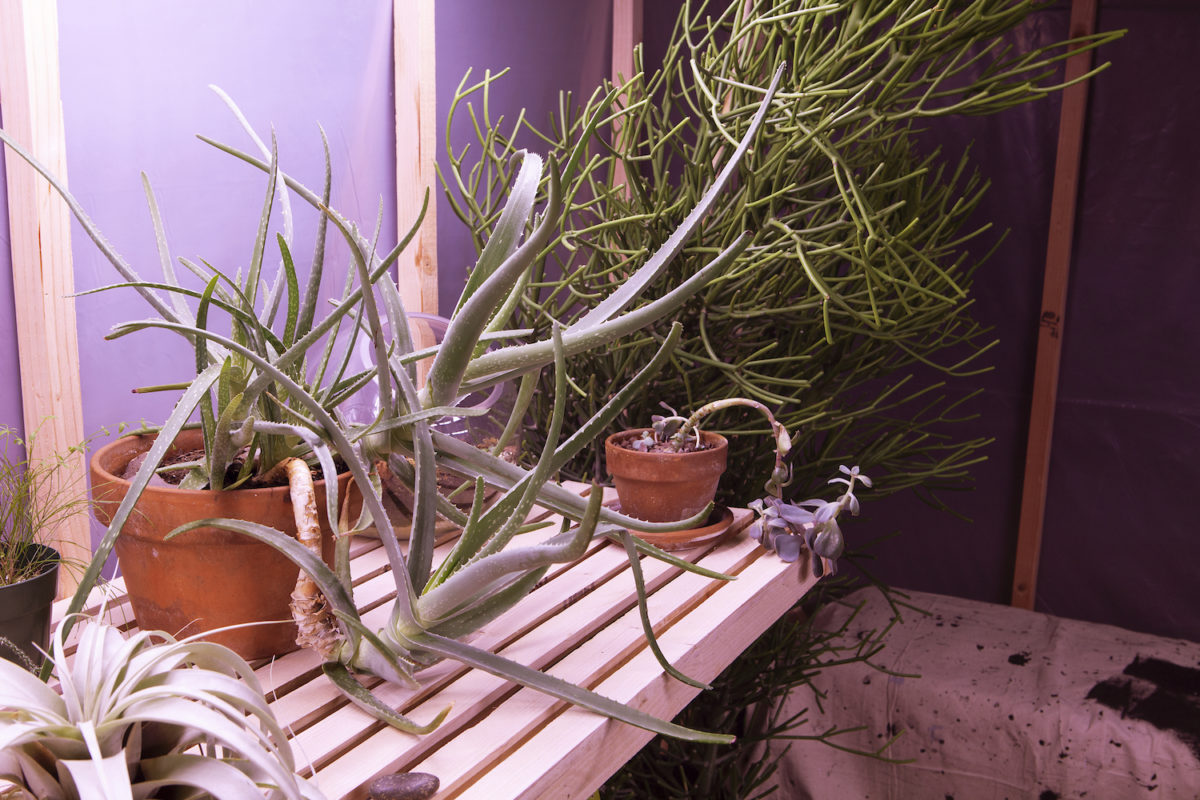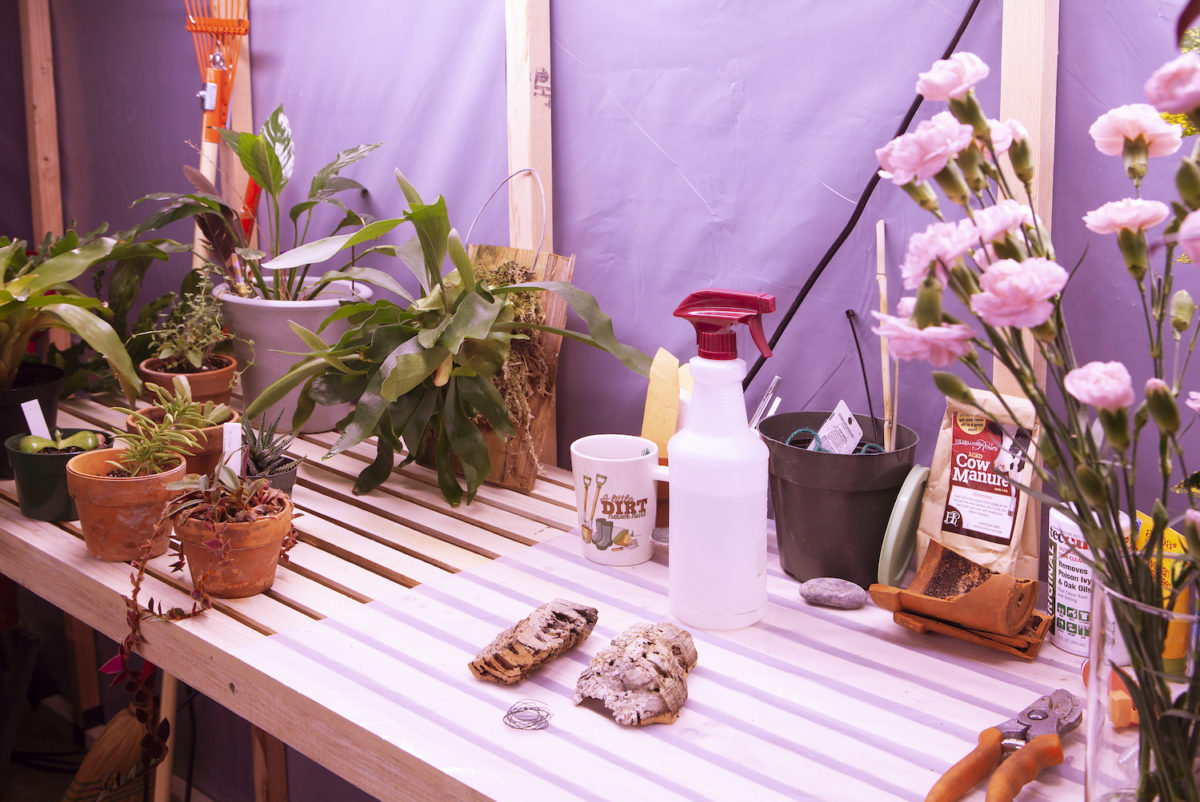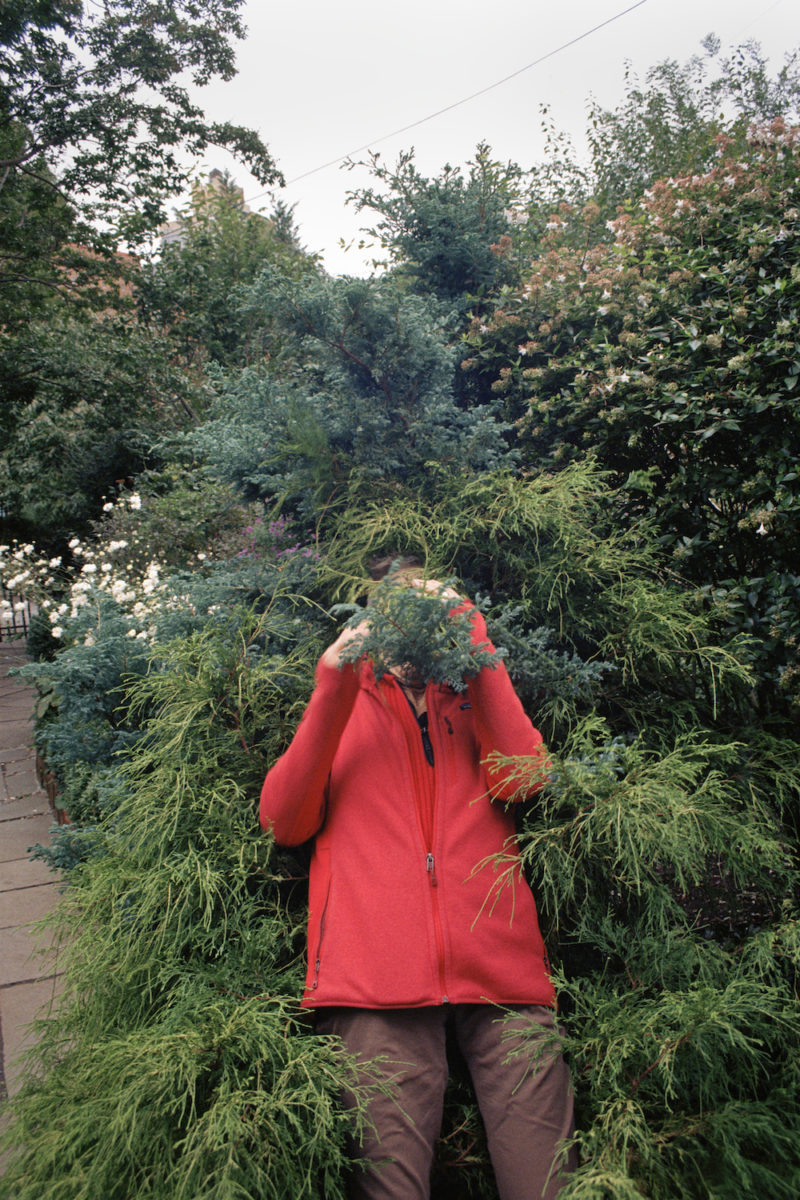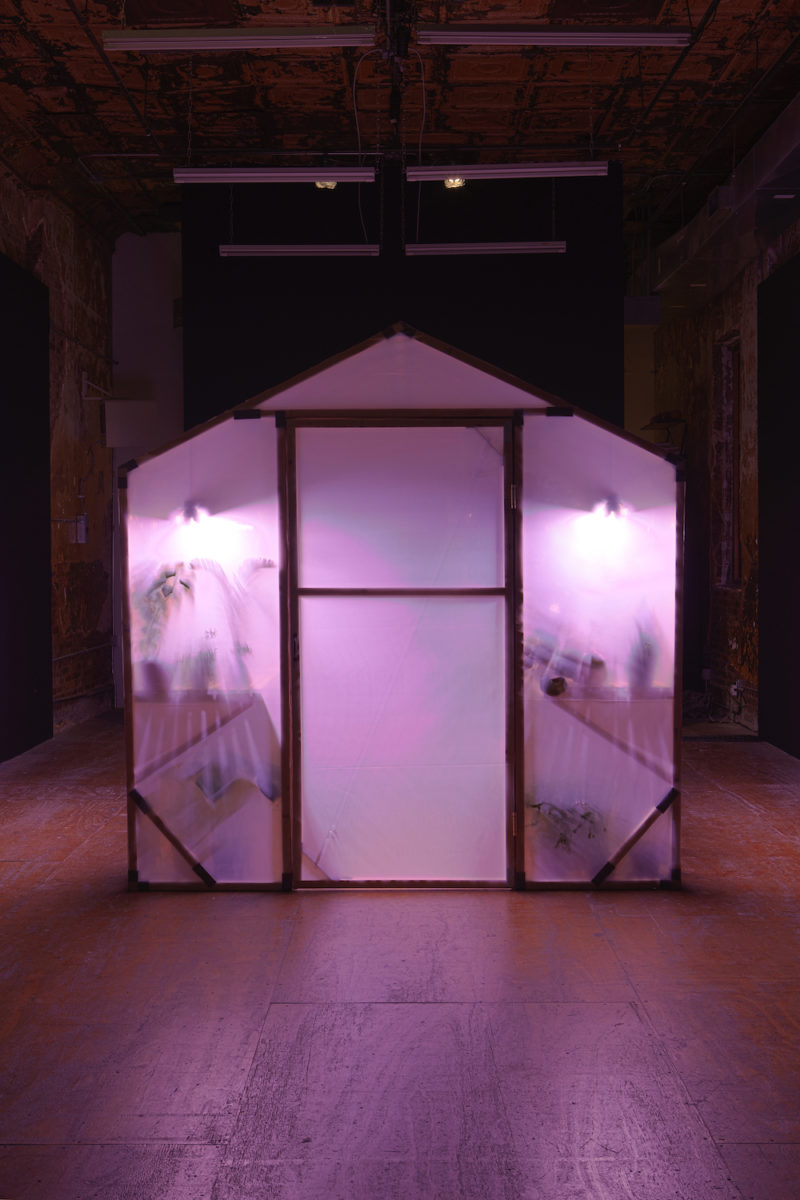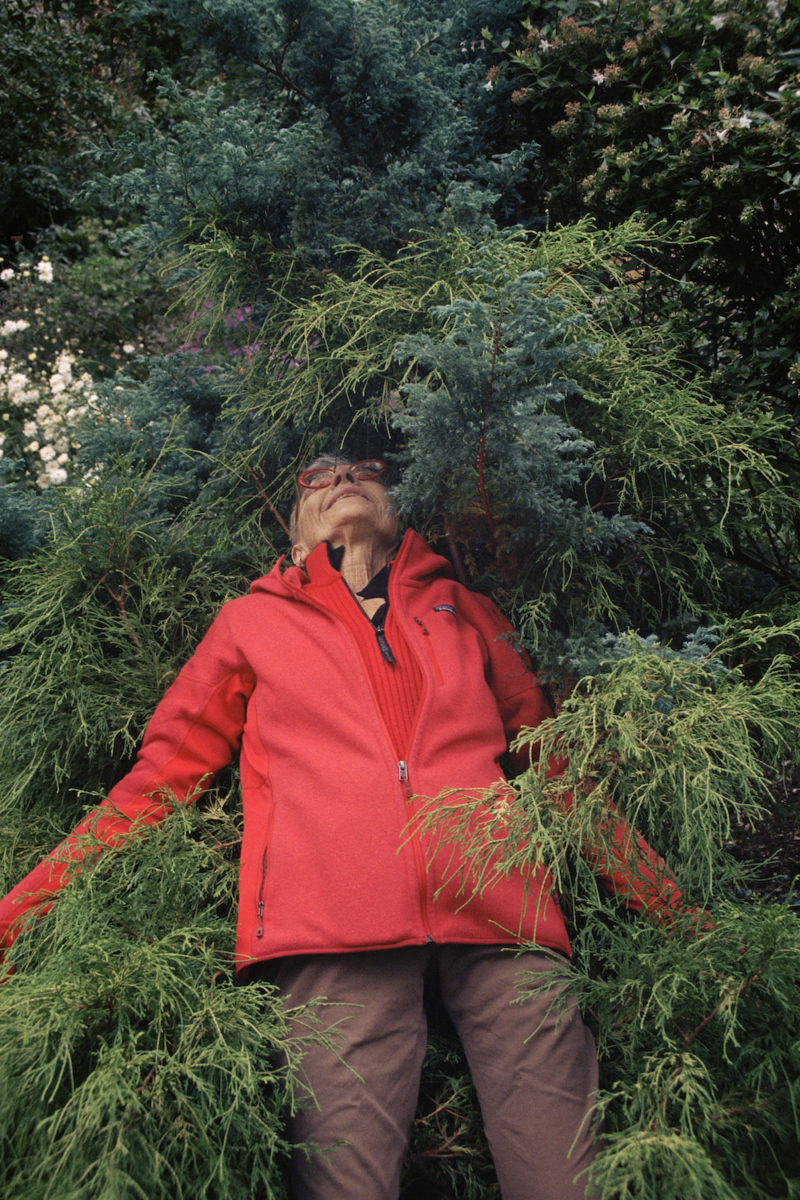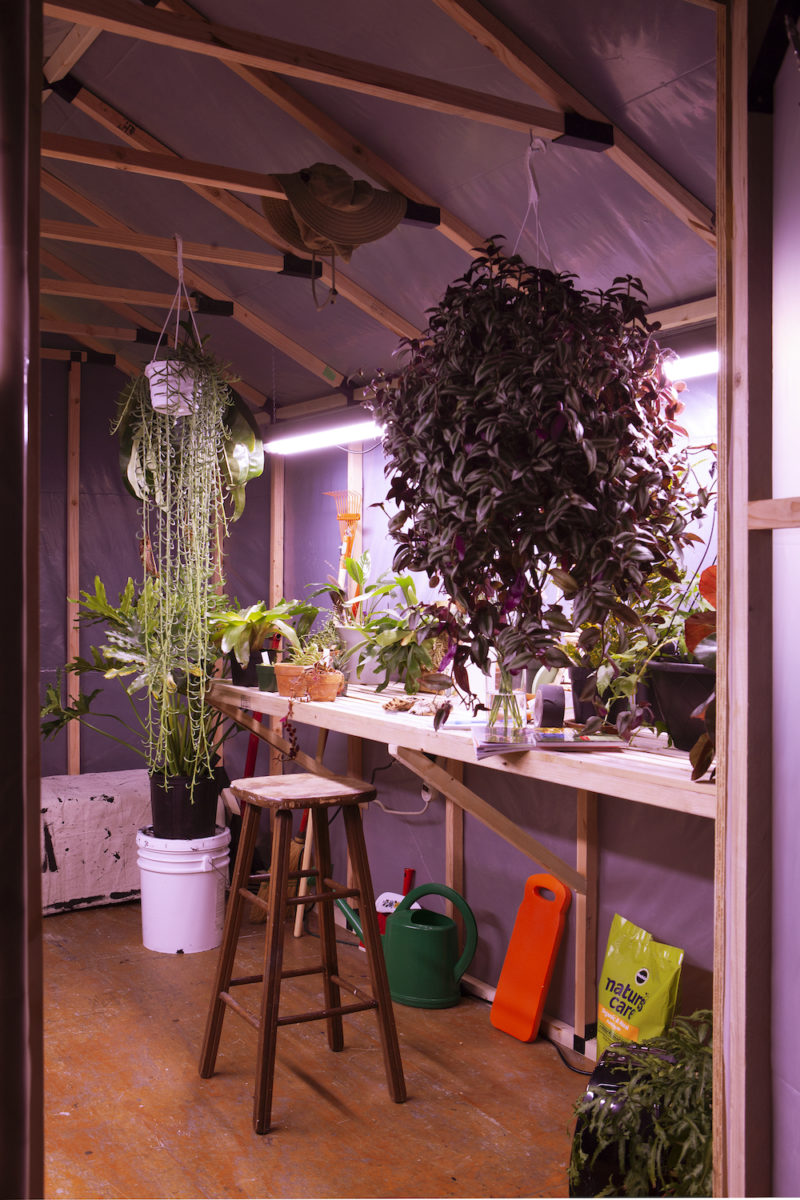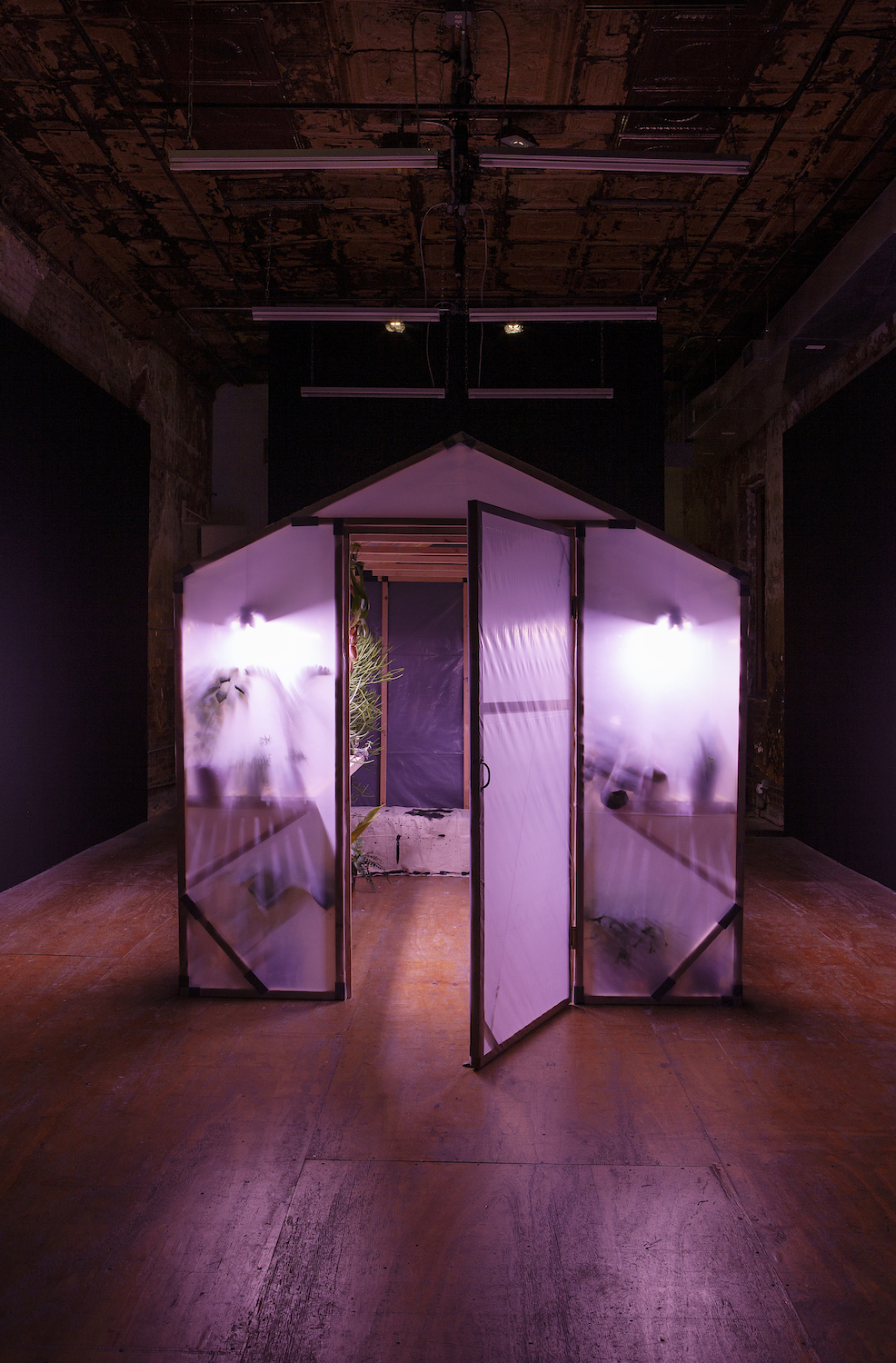
Being an artist very rarely means actually making work full-time; unless you’re either very lucky, very successful, or well-supported by other means. There’s usually a nine to five, evening or weekend shift going on. However, this is often kept a secret, with artists quietly working in bars, teaching, retail or anything else they can get. The work is needed to balance their artistic practice with keeping the rent-and-bills wolves from the door.
Conrad Ventur has taken a different approach to most, having found an ingenious way of combining his part-time paid work with his artwork, in the shape of new exhibition A Green New Deal at New York gallery Participant. The show is a horticultural wonderland, conceptual art installation, communication-instigator and showcase of the nature of labour, all rolled into one.
At its heart is a functioning greenhouse filled with a mixture of succulents, bonsai trees and carnivorous plants—some of which were provided by Ventur, some by friends and many by strangers who heard about the project through a callout on Instagram. “The plant exchange is a way to have a conversation, and I can be gardener and performer,” he says. “It’s a relational installation: I wanted to show that people can be more hands-on with nature, even in cities.”
The artist, whose work in the early 2000s centred on documenting the vibrant, bonkers New York electroclash scene, has photographed and toured with acts like Peaches, Chicks on Speed and Fischerspooner. The glitter, gold, riotous synths and outré outfits all feel like a far cry from gardening but, viewed in a certain light, there’s a clear thread running through Ventur’s work.
“I wanted to show that people can be more hands-on with nature, even in cities”
Discussing his latest exhibition, the artist points out that New York boasts numerous community gardens and opportunities to interact with green spaces and plants, if you know where to look. “My biggest muse is New York, and cities in general—what it’s like to be a person and survive in cities,” he says. “I’ll always just be interested in connectivity and in people, not just the medium they’re memorialized in.”
- Pavilion, Greenhouse, Plants, 2020
Ventur describes his work as being about “horticultural labour”. He sets out to explore how people can actively get involved in environmental sustainability issues, and “not just recognise that there’s a problem.” And while it’s both a direct reference to, and interplay with, his day job in public horticulture, the piece also has deeper meanings around grief, loss, what it means to live and work as an artist. It also touches upon the importance of real-life interactions at a time of political and social turmoil.
“I figured out a way to make art while I work,” he says, having previously struggled to balance precarious odd jobs and “bits of art sales” to pay his rent while continuing his practice. “I thought, ‘the world is burning up’ and, politically speaking, things are so divisive; so I made the choice between, either I’m going to stay underwater the whole time and my life will get more of a mess, or I’m going to work and really focus on making a sustainable life.”
The show feels like something of a departure for Ventur, whose best-known work to date is a series of portraits that re-stage Andy Warhol’s video portraiture screen tests. For this, he tracked down those who featured in them, including Mario Montez, the Warhol-circle darling dubbed the first “drag queen superstar”. Thought to have disappeared in the 1970s, the pair met in 2010. They soon became close, and Ventur came to see Montez as a strange combination of friend, muse, grandfather-figure and drag mother. They worked together on a series of digital c-prints, videos, and live performances, with the idea that these would culminate in a new performance work. Tragically, Montez died in 2013, and Ventur instead staged tribute screenings.
“I’ll always just be interested in connectivity and in people, not just the medium they’re memorialized in”
This heartbreaking event clearly impacted Ventur and his work since, including his latest exhibition. It features a video titled The Internship, which examines the nature of influence and the importance of collaboration and interpersonal mentor/mentee relationships, looking at how these can often underpin meaningful artistic collaborations. The show also features photographic portraits of artists including Carolee Schneemann and the late Barbara Hammer, another artist and gardener with whom Ventur formed a close relationship until her death in 2019.
- Pavilion, Greenhouse, Plants, 2020
The nature of grief, death and a strong appreciation of life itself permeates Ventur’s thinking as an artist. “The silver lining with loss is that you truly appreciate the things and people around you,” he says. “[Hammer] made her death easier for everyone: she taught us how to be more comfortable with it instead of it being this tragedy. She provided the community here with a way to be more open to her loss, and she spoke openly about things like palliative care.”
“She reminded us that she was still living, and not to wallow. Our societies are designed to give us so much negativity, so that’s why my latest projects are about just trying to raise it up a little bit and point out that there are people and environments around us with the potential for joy. They connect with us all.”
Al photos by Mark Waldhauser
